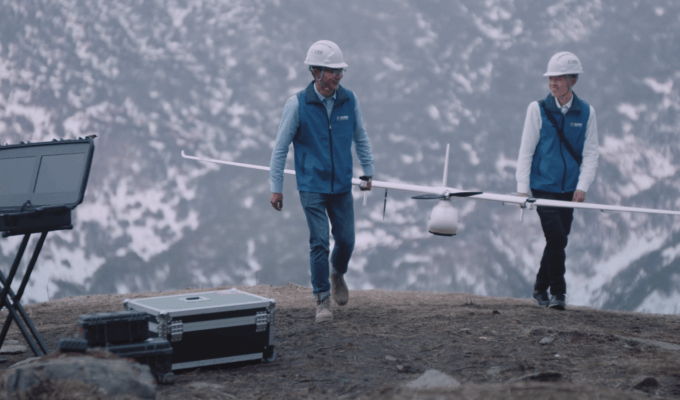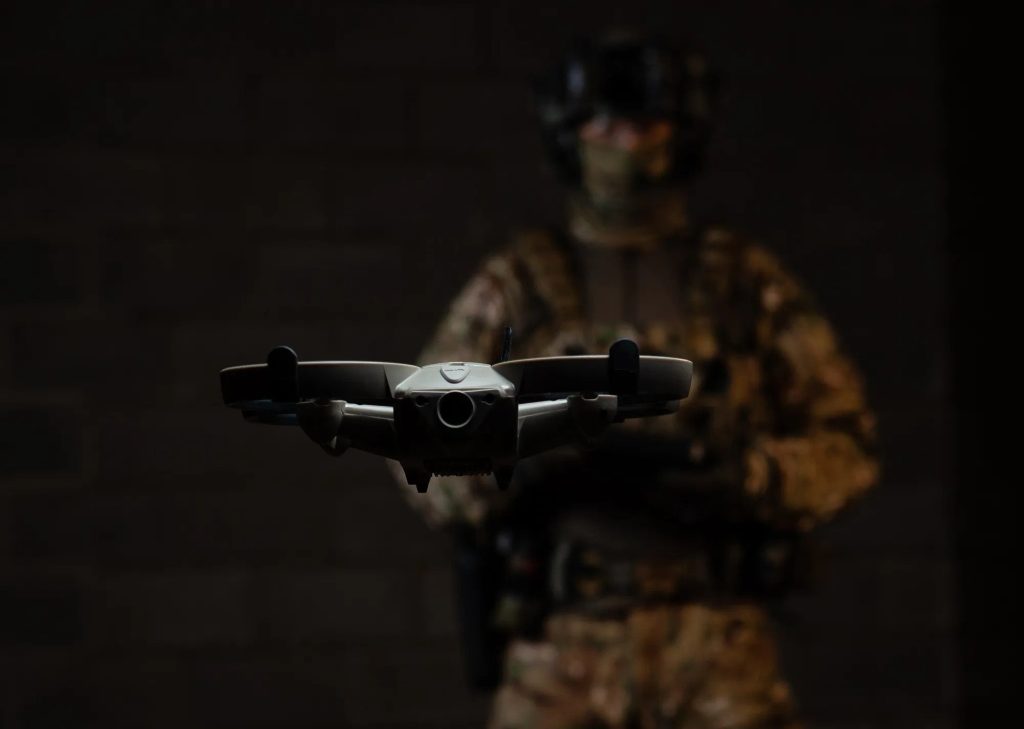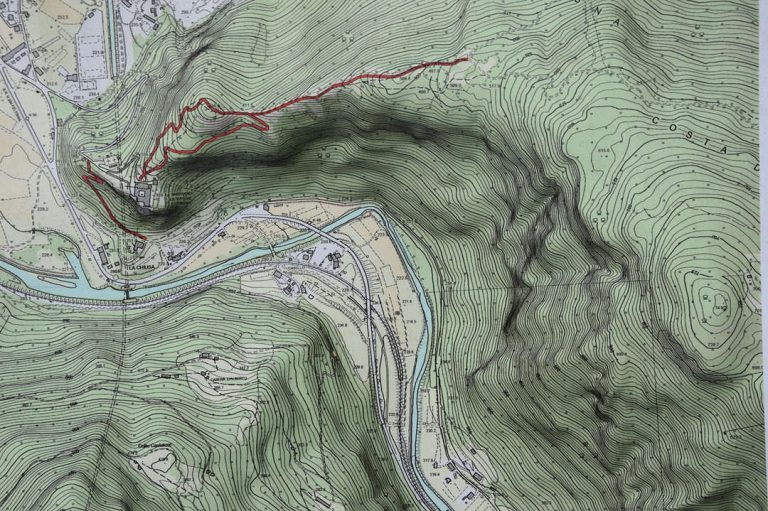Different Types of Drones and Uses (2025 Full Guide)
Over the past decade, drone technology has advanced significantly, making drones inexpensive and increasingly common in both professional and civil environments. The huge takeoff of drones means that there are a large number of different types of drones available for purchase, which is good news for people who want their own small flying machine, as you are sure to find one that fits your needs perfectly.
But different types of UAVs are used for various purposes, so you'll have to do more research to discover the best drone for your specific needs. In this article, we will discover a simple and practical classification of the different drone types based on very specific parameters.

What is a drone?
A "drone" is an unmanned aerial vehicle. That is a machine that can fly without a human pilot. Its flight path is programmed by software or controlled by remote control.
This is just a general definition, there are different terms to refer to this type of aircraft.
- RPA or RPAS refers to Remotely Piloted Aircraft and Remotely Piloted Aircraft Systems. This concept refers to the remote control of an aircraft.
- Drone, the most popular name, refers to unmanned aircraft.
- UAV or UAS is an acronym for Unmanned Aerial Vehicle and Unmanned Aerial System. This concept refers to the absence of a physical pilot on the aircraft.

What are the different types of drones and their uses?
Drones come in different sizes, capabilities, and a wide variety of models, from recreational mini-drones to control and surveillance drones. Instead of throwing a bunch of new information at you, we decided to break things down into a few different drone categories.
Types of drones according to wing types
Here is a rundown of the four main types of drones according to wing type, their uses, their advantages, and disadvantages:
Drone type | Advantage | Disadvantage | Use |
|
|
| |
|
|
| |
Single-rotor helicopter drones |
|
|
|
|
|
|
Multi-rotor drones
Multi-rotor drones, also known as rotary-wing, are the most widely used type of drones for recreational and professional use. Their small size and excellent control make multi-rotor drones the best choice for aerial photography.

Offering great versatility, they allow the installation of all types of cameras to perform different tasks. They are drones that can hover easily and take off vertically, adding more flexibility as well.
However, the biggest drawback of multi-rotor drones is usually related to the flight autonomy they offer. Adding more rotors makes the drone more difficult to control. All those moving parts also consume extra energy, draining the battery faster. Most multi-rotor drones have a flight time of less than an hour. If we want to perform certain tasks that take a long time, we have to have several batteries to replace them. This also means extra costs.
Fixed-wing drones
Fixed-wing drones are those capable of harnessing air and generating forces that allow them to stay in the air by taking advantage of their aerodynamics. They are similar in design or aesthetics to radio-controlled aircraft and are often used to map large areas due to their powerful autonomy. They take advantage of their aerodynamics and design to keep them afloat, which means they have a longer endurance and flight speed.

The downside of fixed-wing drones is that they tend to be more expensive compared to multi-rotor drones. They require a large, clear space to take off and land, just like airplanes. Some larger models also require specialized ground equipment to help them take off and land. In addition, fixed-wing drones can only fly forward, so they do not offer the same maneuverability as multi-rotor drones.
Single-rotor helicopter drones
Powerful and durable, single-rotor drones look similar in construction and design to actual helicopters, with only one rotor to provide power, plus a tail to control direction and stability. Combining the advantages of tiny multi-rotor drones and single-rotor drones, they are better suited to carry larger payloads and fly more efficiently than multi-rotors. Single-rotor devices typically use gas engines rather than batteries, which greatly increases their flight time.

However, these drones tend to be larger and more complex than other types of UAVs. This means they are more expensive and more difficult to operate, and their larger blades can make them more dangerous.
Fixed-wing hybrid VTOL drones
As the latest drone technology to be introduced, fixed-wing hybrid VTOL drones refer to fixed-wing aircraft that have been modified to take off and land vertically. They combine the long-range and flight time of fixed-wing UAVs with the vertical takeoff capability of rotary-wing devices, eliminating the drawbacks of fixed-wing UAVs that require large spaces for takeoff and landing. They are designed for mapping, power line inspection, surveillance, agriculture, and rescue operations.

However, this VTOL drone tends to be unsuitable for beginners, and the more advanced technology puts it at the high end of the fixed-wing drone market in terms of cost.
Types of drones according to their sizes
Drones can be classified according to their size, from very small drones to large drones.
Size | Length | Propeller diameter | Weight | Use |
Very small drones | 150mm (15cm, 6 inches) or less | 51mm (2 inches) or less | 200 grams (0.2kg, 0.44lbs) or less | Military surveillance |
Small drones | Up to 300mm (12 inches) | 76-152mm (3-6 inches) | 200-1000 grams (0.44-2.2lbs) |
|
Medium drones | 300-1200mm (12 inches – 4 feet) | 150-640 mm (6-25 inches) | 1-20kg (2.2-44 pounds) |
|
120cm (4 feet) and up | 64 cm (25 inches) and up | 20kg (44 pounds) and up |
|
Very small drones (Nano)
The size of these drones can be as small as an insect and easily fit in the palm of your hand, with dimensions between 1 and 50 cm. Because of their small size and wing design, nano drones can fly in very confined spaces and are not easily detected and are mainly used by spies to gather information on people and objects.

Small drones
Small drones they are slightly larger than micro drones, between 50 cm and 2 meters. The wings of these drones are usually fixed and can be easily lifted by the arm and thrown into the air. They can be used for indoor equipment inspections (prop guards, cages ......), but they are more often used outdoors for recreation and photography, such as traffic management.
Medium drones
Medium-sized drones are larger and heavier than smaller drones, with dimensions exceeding 2 meters and weighing up to 200 kilograms. They take two people to lift them, which are most often used for professional applications and amateur photography.

Large drones
Large drones are comparable in size to smaller aircraft and are used mainly for military purposes such as surveillance and strategy. With the most advanced technology, they are replacing fighter jets, allowing for rapid enemy detection and combat capabilities. They are also designed for civil applications such as drone deliveries or filmmaking.
Types of drones according to their payload capacity
How much weight a drone can carry will depend on the power of the motor and the lift generated by the propeller in standard weather conditions. Below, we will divide UAVs into four categories based on the weight of the payload they can carry.
Drone type | Weight | Payload capacity | Use |
Featherweight drones | Less than 11 grams (0.011 kg) | 4 grams to 100 grams (0.004 to 0.1 kg) | Military surveillance |
Lightweight drones | 200-1000 g (0.2-1 kg) | 150-270 g (0.15-0.27 kg) | Recreation and photography |
Middleweight drones | 1-600 kg (2.20-1323 lb) | 400-1460 grams (0.4-1.46 kg) |
|
More than 160 kg | More than 1,000 kg |
|
Featherweight drones
These are typically referred to as nanoscale drones, which weigh as little as 11 grams (0.011 kg) and can only carry payloads ranging from 4 grams to 100 grams (0.004 to 0.1 kg).
Lightweight drones
Lightweight drones refer to mini drones with an average weight of 200-1000 g (0.2-1 kg), and their payload capacity averages between 150-270 g (0.15-0.27 kg).
Middleweight drones
Here we are referring to medium-sized drones weighing between 1-600 kg (2.20-1323 lb). They are generally divided into two categories: commercial drones and military drones.

The payload capacity of consumer and commercial mid-weight drones averages between 400-1460 grams (0.4-1.46 kg). An example of a consumer/commercial drone is the JOUAV CW-15, which is capable of carrying an incredible 3 kg of different payloads!
Military mid-weight drones have payload capacities between 40 kg (88 lb) and 150 kg (331 lb).
Heavy lift drones
Heavy lift drones refer to large drones, mainly military drones, with a small percentage used for delivery and high-precision mapping. These drones weigh more than 160 kg, with some weighing more than 1,000 kg. Their payload capacity can reach 550 kg and above.

Types of drones according to drone range
According to the range, UAVs can be classified into very close range, close range, short range, mid-range, and long range.
Drone range | Flight distance | Flight time | Use |
Very close-range drones | 5 km | 1 hour | Recreation |
Close-range drones | up to 50 km | 1-6 hours |
|
Short-range drones | up to 150 km | 8-12 hours |
|
Mid-range drones | 644 km | 24 hours | Military combat and surveillance |
More than 644 km | More than 24 hours |
|
Very close-range drones
Very close-range drones can fly within a range of 5 km from the controller, with an average flight time lasting 1 hour! These drones are mainly used for recreational purposes.
Close-range drones
Short-range drones can fly up to 50 km away from the controller and stay afloat in the air for 1-6 hours. Because they can fly very high, they are often used in military drones for surveillance.
Short-range drones
Short-range drones are drones that can fly up to 150 km away from the controller. With very powerful batteries, they can stay in the air for 8-12 hours and are usually used for combat as well as surveillance purposes.
Mid-range drones
These drones are capable of flying 400 miles (644 km). They can fly at altitudes of 12,000 to 30,000 feet for more than 24 hours. These are typically drones used for combat as well as surveillance.
As a drone with longest flight time and range, the JOUAV CW-30E has a control range of up to 200 km and a long flight time of up to 10 hours, which are widely been used in large-area surveillance and mapping.
Long-range drones
Long-range drones, also known as endurance drones, are technically and functionally superior to these other drones. It is estimated that they can travel well over 400 miles (644 km) (some reaching hundreds of thousands of square miles) without losing their signal. Although their use is primarily for military surveillance and espionage, they are also used by professionals to track weather patterns, geology, and geographic mapping.
Types of drones according to their power sources
In order to fly, a drone must have a power source, such as batteries or fuel. Based on the different power sources, drones can also be classified into different types.
Power source | Pros | Cons |
Battery-powered drones |
|
|
|
| |
Hydrogen fuel cell drones |
|
|
Solar drones |
| Limited flight time |
Battery
The primary source of power for most drones is the battery. Three common types of drone batteries include lithium polymer (LiPo), nickel-metal hydride (NiMH), and nickel-cadmium (Nickel-Cadmium) batteries.
Gasoline
Generally, gasoline is used as fuel for large-sized drones because it is light and cheap. Gas powered drones have long flight times and large payload capacities.
Hydrogen
Hydrogen-powered drones are more efficient at high altitudes than many drones using internal combustion engines, which suffer more derogation due to lower air density. Smaller internal combustion engines exert peak fuel efficiency in only a narrow range of conditions with low noise, zero-emission, and great safety.
An example of a hydrogen-powered drone is the CW-25H, also known as DJ25, jointly developed by JOUAV and Doosan Innovation. It won the Wins CES 2022 Innovation Award and can carry a payload of up to 4kg.

Solar
Solar-powered drones use the sun as a power source, converting sunlight into electricity in order to charge their batteries. This allows for long flights as long as the sun is available.
Types of drones according to their abilities & equipment
Toy drones
Toy drones it is conspicuous in the toy department of supermarkets, come in various sizes and shapes, with or without cameras, can be used indoors and sometimes outdoors, they can be controlled by remote control or smartphone depending on the model, he is generally moderately priced and is the ideal drone for beginners.

Photography/videography drones
There are different kinds of drone models of cameras drones that can record photos or videos in HD, Full HD, or 4K, with the camera mounted on a 2-axis or 3-axis nacelle for perfect image stability.
They can be equipped with different features, GPS, people tracking, route programming, etc. Getting smaller and more sophisticated, it allows you to capture magnificent images from almost anywhere! Be aware, however, that the production and distribution of photos or videos taken in the airspace are strictly regulated.
Racing drones
Competitive drone or FPV racing is generally used on private and strictly regulated land and consists of obstacle courses at high speeds by flying a drone with virtual reality glasses, an activity that requires many hours of training to gain the agility and reflexes needed to control the drone. There are now a growing number of clubs that can legally engage in this hobby.

Ready-to-use (RTF) drones
RTF drones are drones that are available for users to assemble themselves. You can put all the parts you need in one kit, making it a fun experience as you build your drone!
GPS drones
These GPS drones are connected to satellites and use them as a means of plotting flight direction. They also can "return home" when their batteries are low.
Professional drones
Professional drones can be equipped with cameras or video cameras for all types of aerial photography. They can also be equipped with probes, sensors, or thermal imaging cameras for technical services such as mapping, surveillance, or others depending on the needs of the customer.
Professional drones are the only aircraft that can fly over built-up areas, restricted or prohibited areas, and conduct night flights, as long as the professional pilot has made a county declaration and obtained the required authorization.
They provide many services in the public and private sectors, inspection, control, or monitoring, whether it's beaches, traffic, buildings, or rooftops, these services are huge and continue to grow.
Military drones
Military drones, the origin of drones, are a completely different drone category from civilian drones. They are increasingly used in various conflicts, initially for surveillance and intelligence, but now they can be armed and become formidable weapons.

Delivery drones
Delivery drones are a new application of drones that are being tested by companies like Amazon. These UAVs types may soon become widely available to us in the future
Types of drones according to motors
According to the motor type, we can divide the drone types into brushed motor drones and brushless motor drones.
Drone motor | Pros | Cons |
Brushed drone motors |
|
|
Brushless drone motors |
| High cost |
Brushed drone motors
Brushed motors are the type of motor present in most recreational drones. While they are indeed cheaper motors, they also require more maintenance than brushless motors.
The power of these motors is practically the same in all the models we could find, only the size varies (the larger the size, the more power). However, most of these motors are not in direct contact with the propeller.
The motor is connected to a pinion gear which turns a large gear which in turn drives the motor. This is called a "speed reducer" because due to these two gears we are reducing the maximum power the engine can give us. This will help us operate the drone and will extend its life because we will not be pushing the motor to its limits at any given time.
Brushless drone motors
The main feature of these motors is the absence of brushes in contact with the rotor. This keeps its maintenance to a minimum and its operation very effective and efficient. In addition, these motors have much higher power than brush/brushless motors (50-70 km/h compared to 150-200 km/h for brushless motors).
However, these types of drone motors work mainly with alternating current, therefore, each motor must have its own ESC. ESC (electronic speed controller) or electronic variables that can define the speed of rotation of the brushless motor.





